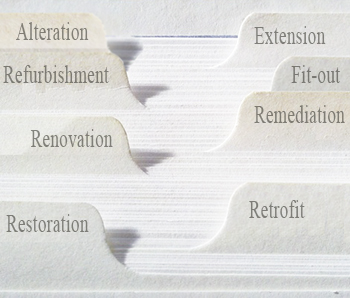Building our Industrial Strategy: green paper
On 23 January 2017, the government published; Building our Industrial Strategy: green paper for consultation.
The green paper sets out proposals for a modern industrial strategy intended to ‘…build on Britain’s strengths and tackle its underlying weaknesses to secure a future as a competitive, global nation’. It targets new investments in infrastructure and research to drive prosperity, and create more high-skilled, high-paid jobs and opportunities.
The green paper proposes new ‘sector deals’ to address sector-specific challenges and opportunities, such as; addressing regulatory barriers, using trade and investment deals to increase exports, and the creation of new institutions to provide leadership, support innovation and boost skills.
Prime Minister Theresa May said; “The Modern Industrial Strategy will back Britain for the long term: creating the conditions where successful businesses can emerge and grow, and backing them to invest in the long-term future of our country.”
Business & Energy Secretary Greg Clark said; “A modern British Industrial Strategy must - build on the UK’s strengths and extend excellence into the future; close the gap between the the UK’s most productive companies, industries, places and people and the rest; and ensure we are one of the most competitive places in the world to start and grow a business… We are inviting businesses and workers to contribute to this vision to help us create a high-skilled economy where every place can meet its potential."
The green paper sets out ten strategic pillars to underpin this approach:
- Investing in science, research and innovation.
- Developing skills.
- Upgrading infrastructure.
- Supporting businesses to start and grow.
- Improving procurement.
- Encouraging trade and inward investment policy.
- Delivering affordable energy and clean growth.
- Cultivating world-leading sectors.
- Driving growth across the whole country.
- Creating the right institutions to bring together sectors and places.
It says little about construction, other than referring to the 'balanced scorecard' approach developed by the Cabinet Office for projects over £10 million, to ensure the impact of procurement on the growth of small business and supply chains, skills and apprenticeships is taken into account when considering the value for money of different bids.
However, the green paper does recognise the importance of infrastructure investment, suggesting, ‘We must upgrade our standards of performance on digital, energy, transport, water and flood defence infrastructure, and better align central government infrastructure investment with local growth priorities.’
It poses a series of questions for consultation, intended to complement the work of the National Infrastructure Commission in producing its National Infrastructure Assessment:
- Are there further actions we could take to support private investment in infrastructure?
- How can local infrastructure needs be incorporated within national UK infrastructure policy most effectively?
- What further actions can we take to improve the performance of infrastructure towards international benchmarks? How can government work with industry to ensure we have the skills and supply chain needed to deliver strategic infrastructure in the UK?
The consultation closed on 17 April 2017.
Commenting on the green paper, Julia Evans, BSRIA Chief Executive, said: “The Prime Minister has included energy in a bid to align central government infrastructure investment with local growth priorities which is seen as good news by BSRIA, members and industry alike. Her promise to ‘take action’ for British Industry by unveiling a new, more interventionist, industrial strategy is also positive.
"It is especially heartening to hear that the Prime Minister also aims to boost STEM (science, technology, engineering and maths) skills, digital skills and numeracy, including extending specialist maths schools, with £170m being invested in creating a new string of Institutes of Technology in England and Wales, taking students from age 16 to 19, also known as ‘builders’ universities’. The UK has some of the best universities in the world but students and the ‘workforce of tomorrow’ have had fewer alternatives to learn practical skills. Clearly, engineering, technical and hands-on skills are crucial for our industry to address the ever increasing skills shortage. And build the houses the country needs."
The Business, Energy and Industrial Strategy Select Committee said the strategy: “lacks the framework for future decision-making which could be the core of a long-term strategy”. Committee chair Iain Wright said: “The government must be bold, ambitious and visionary in developing their industrial strategy to ensure the sectoral and regional balancing to which it rightly aspires is achieved”.
Following the consultation process, the white paper, Industrial Strategy: building a Britain fit for the future, was published on 27 November 2017.
[edit] Find out more
[edit] Related articles on Designing Buildings Wiki
- Balanced scorecard.
- Construction 2025.
- Construction Leadership Council.
- Construction Sector Deal launch.
- Digital Built Britain.
- Fixing the foundations.
- Government Construction Board.
- Government Construction Pipeline.
- Government Construction Strategy.
- Industrial Strategy: building a Britain fit for the future.
- Industrial strategy - the importance of place.
- Infrastructure and Projects Authority.
- List of construction industry reports through history.
- Midlands Engine Strategy.
- National Infrastructure Commission
- National Infrastructure Delivery Plan 2016-2021.
- National Infrastructure Plan.
- National Infrastructure Pipeline.
- UK Digital Strategy.
- Will government waste the opportunity of the National Infrastructure Assessment?
Featured articles and news
Retrofit 25 – What's Stopping Us?
Exhibition Opens at The Building Centre.
Types of work to existing buildings
A simple circular economy wiki breakdown with further links.
A threat to the creativity that makes London special.
How can digital twins boost profitability within construction?
The smart construction dashboard, as-built data and site changes forming an accurate digital twin.
Unlocking surplus public defence land and more to speed up the delivery of housing.
The Planning and Infrastructure Bill
An outline of the bill with a mix of reactions on potential impacts from IHBC, CIEEM, CIC, ACE and EIC.
Farnborough College Unveils its Half-house for Sustainable Construction Training.
Spring Statement 2025 with reactions from industry
Confirming previously announced funding, and welfare changes amid adjusted growth forecast.
Scottish Government responds to Grenfell report
As fund for unsafe cladding assessments is launched.
CLC and BSR process map for HRB approvals
One of the initial outputs of their weekly BSR meetings.
Architects Academy at an insulation manufacturing facility
Programme of technical engagement for aspiring designers.
Building Safety Levy technical consultation response
Details of the planned levy now due in 2026.
Great British Energy install solar on school and NHS sites
200 schools and 200 NHS sites to get solar systems, as first project of the newly formed government initiative.
600 million for 60,000 more skilled construction workers
Announced by Treasury ahead of the Spring Statement.
The restoration of the novelist’s birthplace in Eastwood.
Life Critical Fire Safety External Wall System LCFS EWS
Breaking down what is meant by this now often used term.
PAC report on the Remediation of Dangerous Cladding
Recommendations on workforce, transparency, support, insurance, funding, fraud and mismanagement.
New towns, expanded settlements and housing delivery
Modular inquiry asks if new towns and expanded settlements are an effective means of delivering housing.

























